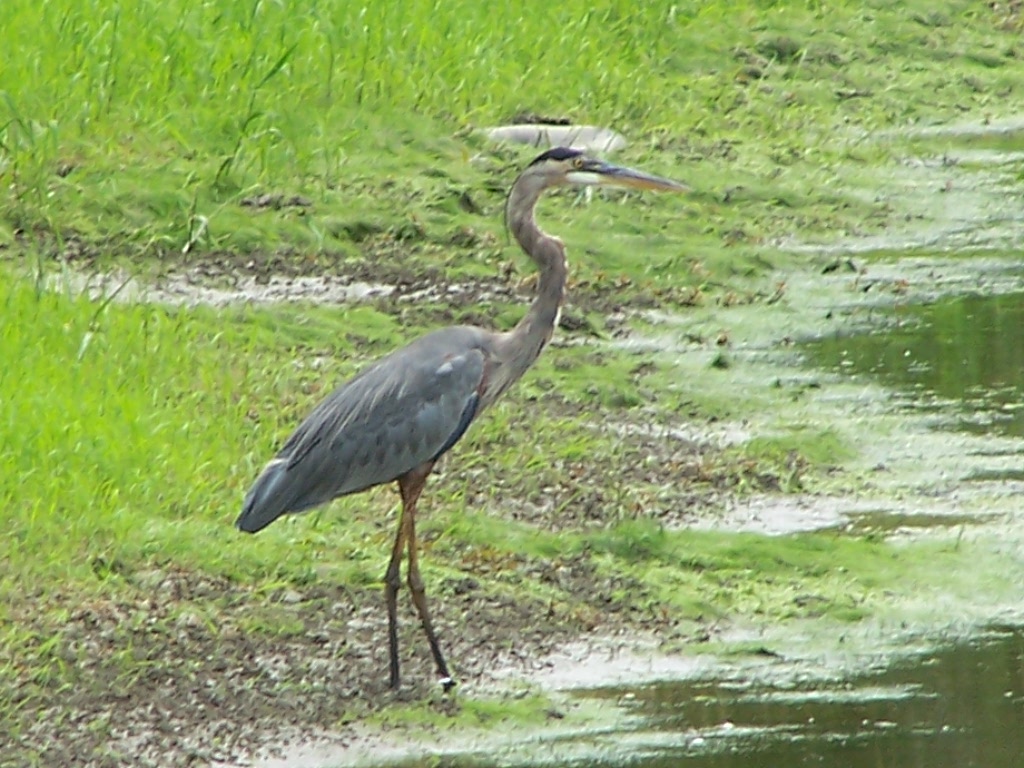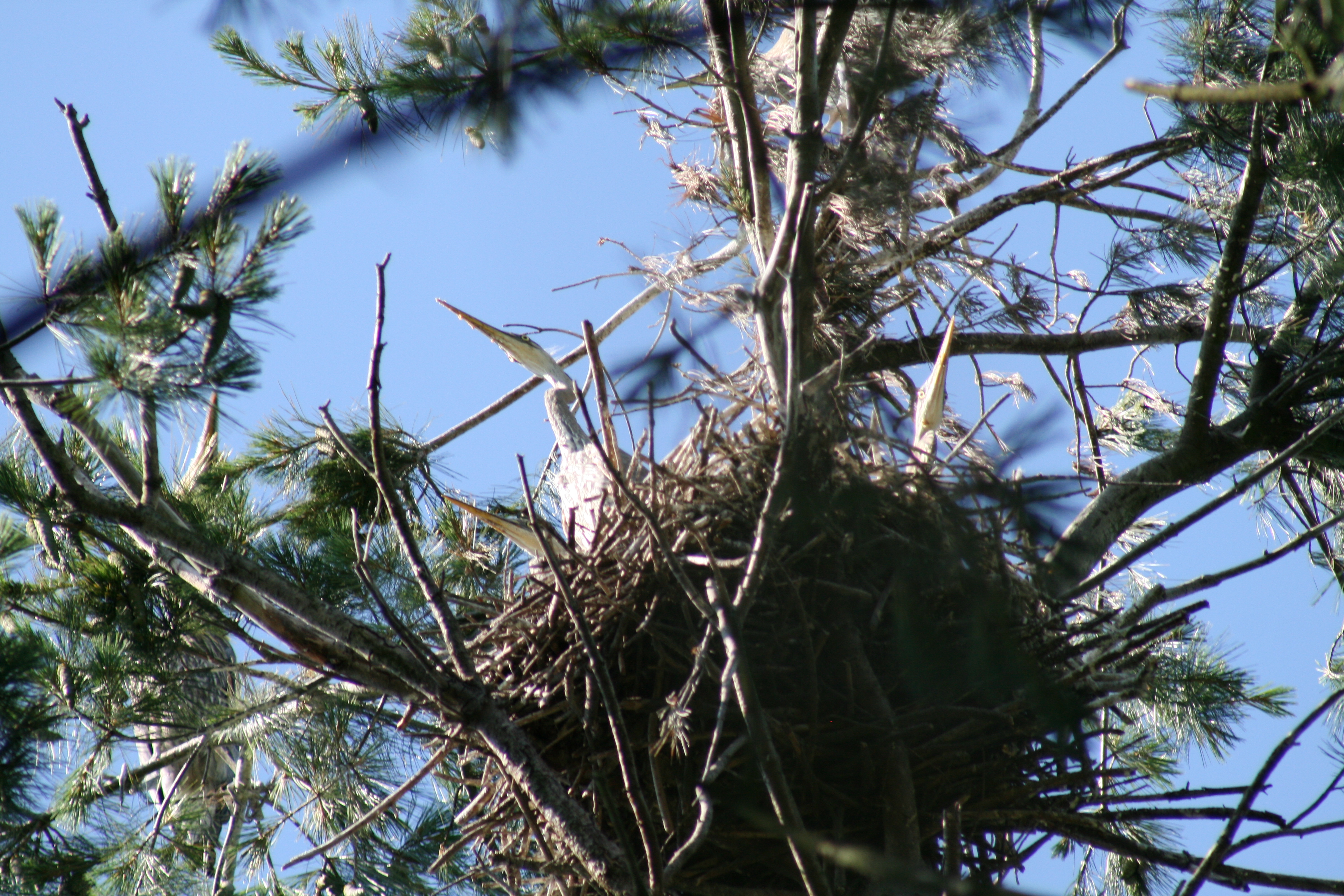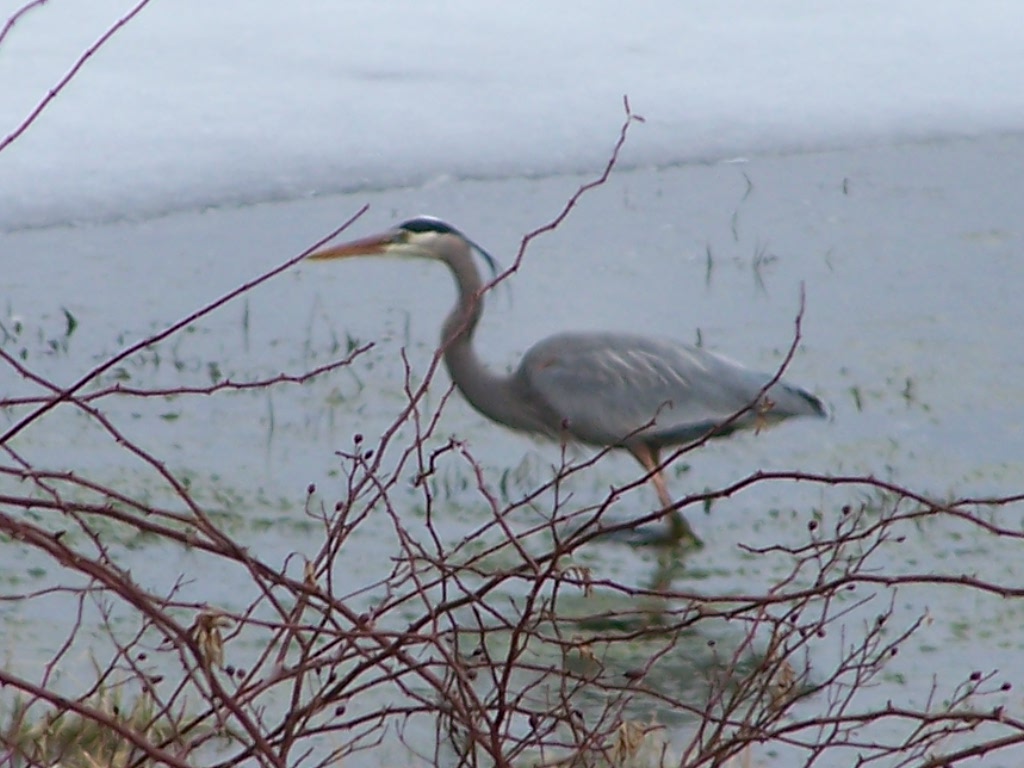Pike County Federation of Sportsmen's Clubs
Great Blue Heron
Ardea herodias

The Great Blue Heron (Ardea herodias) is Americaís largest heron. Native to Pennsylvania, this species was rendered close to extinction at the turn of the twentieth century when commercial hunters killed them for their plumage to decorate womenís hats. Now federally protected, the Great Blue Heron is once again common throughout Pike County.
Great Blue Herons are commonly found around streams, ponds, and wetlands where they feed primarily on fish. The heron is an opportunist though. It will also eat frogs, snakes, crustaceans, and even mammals given a chance. The bird will wade into the water. With crooked neck it looks for a potential meal. When prey is spotted and within range, the heron thrusts out its neck like a striking rattlesnake. Smaller fish are caught in its snapping beak. Larger fish are speared with its sharp bill. The Great Blue Heronís neck will stretch allowing it to swallow fish much larger than expected. And, while it is hard to measure a birdís intelligence, the Great Blue has demonstrated that it can learn a few tricks. There have been many reports of herons stealing bread from dumpsters to use as bait to lure fish into range!
Great Blue Herons are slate blue in color with two black plumes flowing from the back of the head. They have yellow legs and a wingspan of up to 80 inches. Although a migratory bird, donít be too surprised to see a few remain in the winter. If there are patches of open water on the Delaware, they will often stand on the edge of the ice ambushing passing fish.
Great Blues breed in colonies with 150 nests or more being quite common. They nest high in trees and build large stick nests. The nest may be reused for several years, increasing in size each year. Herons lay an average four eggs per nest. When the chicks are born, both parents take turns feeding them regurgitated food. Care should be taken to stay away from the nesting area. If the herons are disturbed too often, the entire colony may abandon their nests and relocate to another area.


Heron nest with young Heron showing head plumes - note snow in background